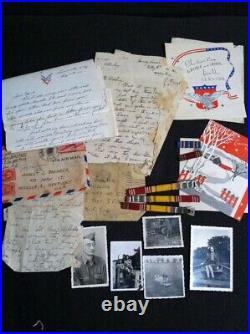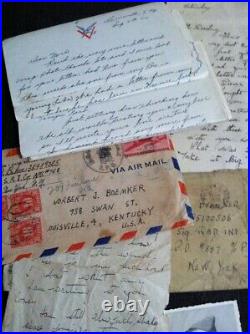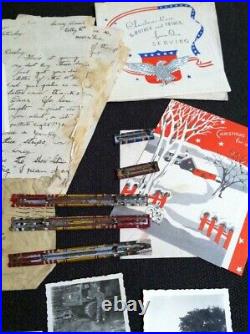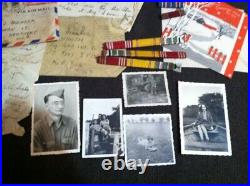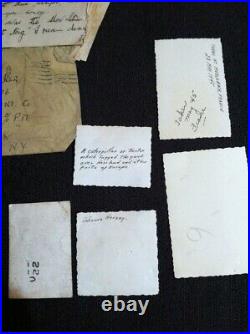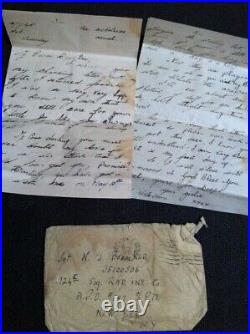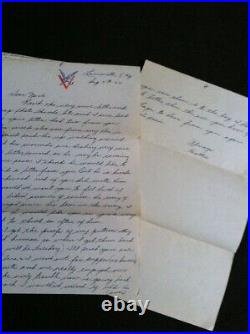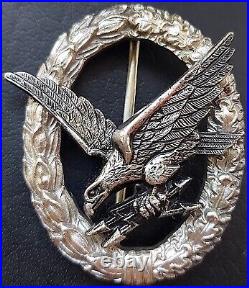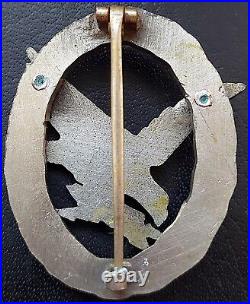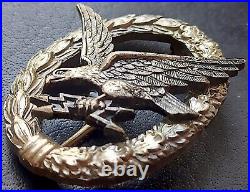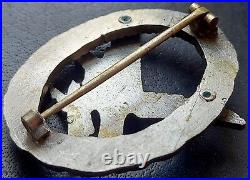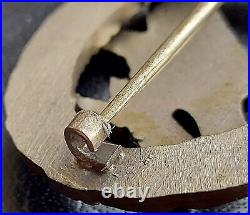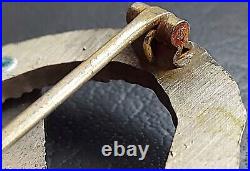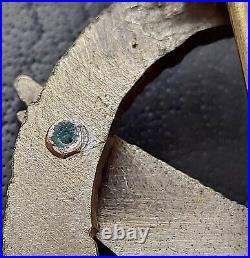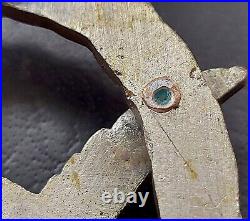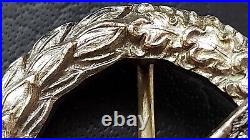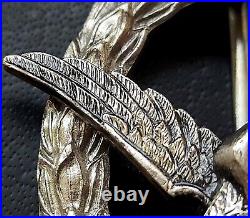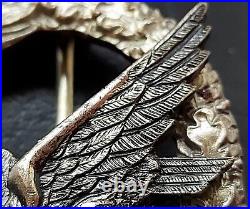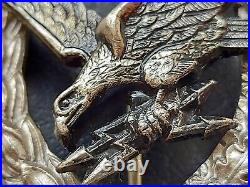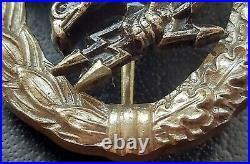Boemker, of the 124th Signal Radio Intelligence Company, APO #887. Norbert Boemker resided in Harrison, Indiana. He enlisted in the army on 16 Jan 1941, Louisville, Kentucky. He was assigned to the 124th Signal Radio Intelligence Company. While overseas he was writing to “Hattie” in the US who eventually became his wife. He was also involved with “Sunny” Gormer, and English girl. He may have also been having another affair with Marion, an English girl living in Yorkshire. His wife, Hattie, 30 Sep 1912-1 Jul 1969. Boemker, 10 Nov 1912-4 Dec 1996 at age 84. He and his wife are buried in Calvary Cemetery, Louisville, Kentucky. This is a very interesting group to a GI in a specialized unit. Content of the letters, IMO, is very interesting. Material for this unit is hard to find. The 124th Radio Signal Intelligence Company was organized at Fort Sam Houston in 1941 for the purpose of monitoring enemy radio traffic for intelligence purposes. It arrived in England in September 1942 and went to France in October 1944, and qualified for the Rhineland and Central Europe campaigns. The unit was overseas for three years and recieved a Meritorious Unit Citation. Three narrow army WW2 ribbons bars. Pinback ribbon bars have ribbons for Army Good Conduct Medal, American Defense Service Medal, and ETO Medal They show heavy use. Two narrow army WW2 ribbon bars. Pinback ribbon bars are for the Army Good Conduct Medal and American Campaign Medal. Two cards and envelopes. Photos show woman layihg on ground reading, GI standing by High Speed Tractor, GI with two women, GI with glasses, Female soldier wearing British uniform in boat. Several of the photos have writing on the back. Four letters to Boemker from Hattie. Hattie would eventually become his wife. They are addressed, Dear Norb. The speak of various things such as her brother recovering from wounds in England, family affairs, writing other soldiers, and more. Two-4 page letters from Sunny Gormer. Intimate letters discuss love life, being “Very Good Boy” and “Very Good Girl, ” sending letters to wrong A. Smoking, holidays, writing to soldier husband “to be, ” and more. One loose page of another letter. Page is numbered #3. Envelope from a Soldier named Baker, 124rh SRI Co address to Boemker. Letter and envelope to Boemker. Letter is addressed to him at the 124th Signal Radio Intelligence Co and dated 11 May 45. Letter from “Marion” who speaks of the VE Day celebrations in detail. Letter is only signed, “Your Girlie” but is most probably Sunny. ” She writes about the song and alludes to, “Is you is or is you ain’t my Baby. She seems concerned about their relationship. Ribbon bars show normal wear/tear associated with age. This includes fading, wear on edges and other minor age related defects. Letters show wear/tear from age/use/storage. This includes fading with age, tears, chips. Photos show toning with age. All items may show minor age related defects but otherwise sound. Normal wear and tear associated with age.
Posts tagged radio
Original German post WW2 version / 1957 pattern Luftwaffe Air Radio Operator and Air Gunner Badge, STEINHAUER UND LUECK (ST&L) MADE LATER EXAMPLE OPEN HINGEBLOCK, TWO PIECE CONSTRUCTION, IN VERY GOOD CONDITION, PERFECT PIN DEVICE, THE AWARD IS NOT OFTEN SEEN. FEW FACTS ABOUT THE 1957 PATTERN AWARDS. In 1957 the West German government authorised replacement Iron Crosses with an Oak Leaf Cluster in place of the swastika, similar to the Iron Crosses of 1813, 1870, and 1914, which could be worn by World War II Iron Cross recipients. The 1957 law also authorised de-Nazified versions of most other World War II-era decorations (except those specifically associated with Nazi Party organizations, such as SS Long Service medals, or with the expansion of the German Reich, such as the medals for the annexation of Austria, the Sudetenland, and the Memel region). The main government contract to manufacture and supply these new de-nazified WW2 1957 official decorations went to the world famous German firm Steinhauer & Lueck, Luedenscheid Germany. Knights Crosses, Iron Crosses, Wound Badges, Tank Assault Badges etc were re-designed by Steinhauer & Lück – often with the oak-leaf spray replacing the swastika, with S&L having the sole patent rights to all WW2 1957 German decorations. S&L did not have the whole monopoly on medal making, other famous firms such as Deschler & Sohn, BH Maher and Juncker also manufactured these new German decorations. Lüdenscheid is situated between the cities Dortmund and Bonn. It was here that one of the youngest medal firms was founded in 1889 by August Steinhauer and Gustav Adolf Lück. The first production began in a cellar, the customer base continued to increase. A property was bought at 51 Hochstrasse which is still home for this famous company today. During WW2 Steinhauer & Lück produced medals and badges, like the famous Knights Cross and many other types of medals and badges. In 1957 this company was awarded the contract to produce all the newly re-designed legal WW2 1957 de-nazified decorations, plus the contract to manufacture all of Germany’s official decorations including Germany’s highest order the Bundesverdienstkreuz. Only a very limited number of original WW2 1957 medals are still produced, mainly Iron Crosses, German Cross Gold & Silver & Wound Badges and are considered 100% genuine by the German Government. HISTORY OF THE AWARDS. Luftwaffe Air Radio Operator & Air Gunner badge was instituted on January 19, 1935 and dedicated at first (before the institution of the gunner badge) to radio and gunner qualified personnel. Personnel had to success the training course and to participate at least at 5 operational flights. The badge was oval shaped and slightly vaulted surrounded by a silvered wreath composed of laurel and oak leaves on the base. The old silver oxidized eagle is fixed to the wreath by two small round rivets. The eagle clutched in its claws two crossed lighting bolts which could, depending the manufacture, be more or less detailed and cut out or not. The employed metal varied all along the war from aluminum and tombak, to a silver-nickel called”Neusilber”, zinc, and pot metal. Though initially a cloth version was not authorized, one was later introduced and was found in both bullion and silver wire embroidery. The badge was presented in a dark blue box of which several variants exist, with velvet, cloth or flocage lid. The letters on the top are always golden. A certificate was presented to all personnel who received the badge which was worn, as with most war badges, on the lower left breast, below the Iron Cross. As implied by the title, the badge was presented to Air Gunners and Radio Operators and mechanics who completed two months training or five missions. The criteria was shortened if the soldier received a wound in action.
